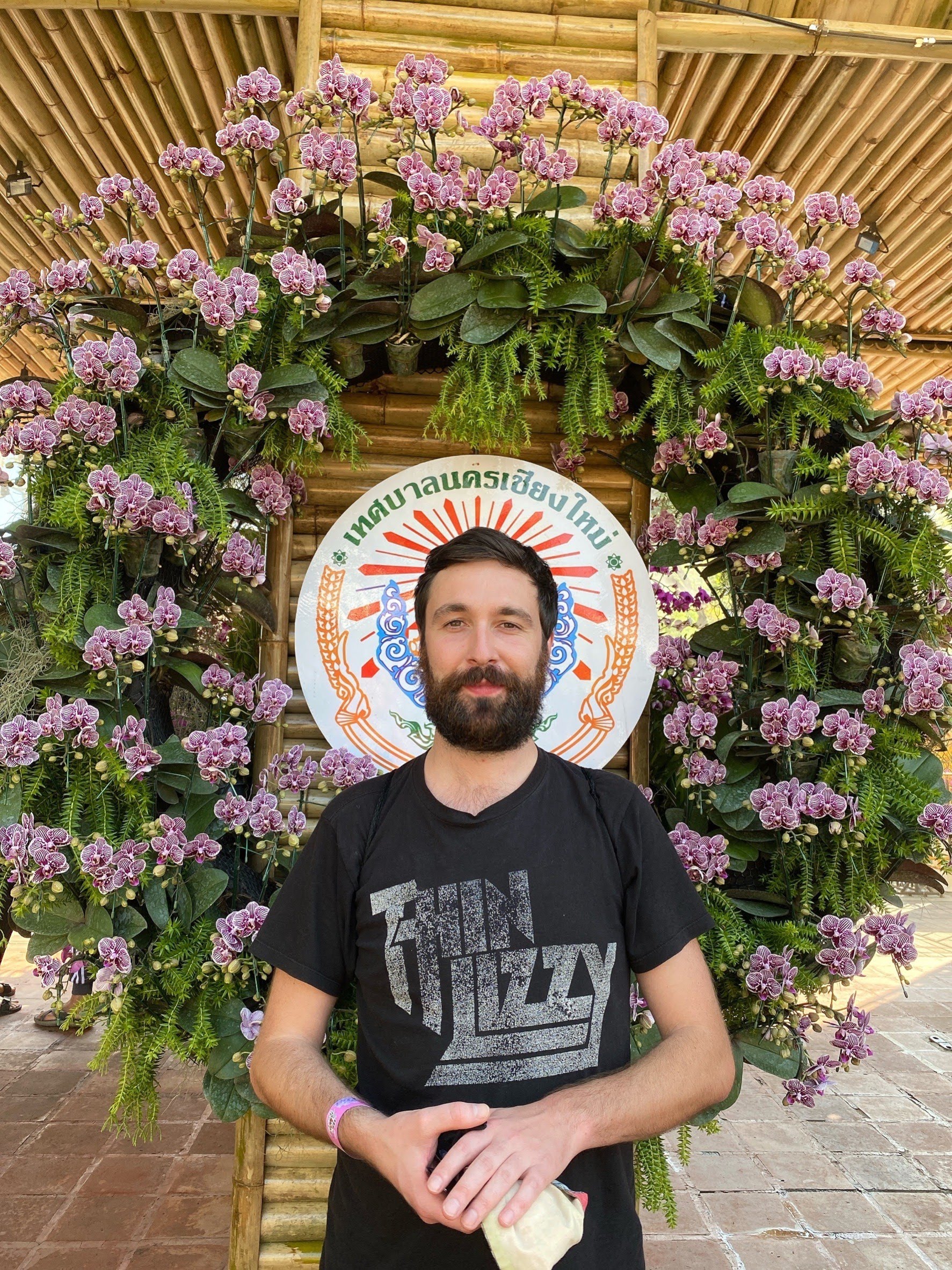Stack and Tuples. Today I Learned: Wednesday 22nd June 2022
 Niall Harrington
Niall Harrington
- Flask is not compatible with working with a MERN stack. (MongoDB, Express, React, Node.) So my teammates will possibly be switching to another stack named FReMP. (Flask, React, MongoDB, Python).
- I have limited experience with stacks. According to Fireship on Youtube, a stack is a ‘sandwich’ of technologies used to create a web app.
- React is a JavaScript framework for the front-end, so I will need to get back to practicing Javascript.
- Flask is Python based, and will be used to create the APIs to connect the front and back-end.
- MongoDB is the database.
- Python is used to create some part of the back-end. What exactly that is, I’m not sure.
For the Python PCEP training, I’ve been stuck on a problem involving finding prime numbers. I eventually got it done with some online help. Originally I tried to include the num > 1 condition from within the for statement. Like this:
if num > 1 and num % i == 0: \ return False \
With this code, the printout kept on missing the 2 on the list of primes up to 20.
- So I found a solution online that wrote it like this.
if num > 1: \ for i in range(2, num): \ if (num % i) == 0: \
return False \return True. \
That seemed to have worked. I’m not sure exactly why, I’m sure it will make sense in the future. I will move on with the training for now.
- Almsot at the finish line now. I hope to do the test at the end of this week.
- I just struggled a lot with a program trying to convert liters per 100km to miles per gallon.
- The course hints and solutions helped, but I still don’t understand it entirely. I think I need better understand how to break down the number into more manageable numbers like meters.
Scope:
- Usually if you create a variable from within a function, its scope is limited to that function. As in it is not accessible from outside of the function.
- But there is keyword to get around this, ‘global’
- If you put the keyword ‘global’ before the variable name, it will be visible from outside the function.
- I even think it might override another variable of the same name from outside the function, that doesn’t have the ‘global’ keyword.
- I wonder is it possible to use the global keyword outside of a function, and if so, what is the reason.
I’d also like to know the reasoning for using the global keyword instead of delcaring the variable outside the function in the first place. \
A variable declared outside a function has a scope inside the function body, unless the function defines a variable with the same name.
- If you finish a line of code with a backslash \, it will tell Python to continue the line of code in the next line of code. \ This is useful for dealing with longer lines of code and improving code readability.
- When a function calls itself, this is called recursion.
- Recursive functions need whats called a base case in it, which is the condition to stop the recursion. \
If the base case is left out, the user will receive a RecursionError exception: \
RecursionError: maximum recursion depth exceeded - These functions are used when calculating the factorial or a number.
- Note: By definition, 0! = 1 \ And 1! = 1
- Here is the recursive function to find the factorial of a number: \ def getFactorial(n): \ if n < : \ return -1 \ if n < 2 \ return 1 \ else: \ return n * getFactorial(n-1)
- Recursive functions need whats called a base case in it, which is the condition to stop the recursion. \
If the base case is left out, the user will receive a RecursionError exception: \
- A sequence is data which can be scanned by the for loop.
A tuple is an immutable sequence type.
- If you want to create a tuple, you need to enter a comma after it when declaring it. Eg.:
one_element_tuple_1 = (1, ) \ or \ one_element_tuple_2 = 1.,
- Tuples prefer to use parenthese.
- Whereas lists prefer to use brackets []
To repeat, tuples cannot be modified: \
my_tuple = (1, 10, 100, 1000)my_tuple.append(10000) del my_tuple[0] my_tuple[1] = -10
- If you want to create a tuple, you need to enter a comma after it when declaring it. Eg.:
None of the above functions or instruction will work because they are trying to change the value of the tuple.
```
AttributeError: 'tuple' object has no attribute 'append'
```
- I learned about tuples at some stage a number of days ago. I though that a tuple was a pair of elements in a dictionary. Or a key value pair. Maybe I just didnt understand it at the time.
- Individual elements within are tuple are not deletable, but you can delete a whole tuple like this: \
my_tuple = 1, 2, 3,
del my_tuple
- There is also method used to create tuples: tuple(). You can use this to create a tuple from a list or dictionary. Eg. \
my_tuple = tuple(my_list) \ \You can also convert a tuple into a list with the list() method: \my_list = list(my_tuple) \ \Theres also the dict() method to convert sequential into a dictionary. - A dictionary is a one-way tool.
- Hanging indents is the phrase used for indenting lines of code such as elements of a dictionary for the purpose of readability. Eg. \
dictionary = {
"cat": "chat",
"dog": "chien",
"horse": "cheval"
}
- Since dictionaries are not a sequence type, you cannot use a for loop on them directly. (Because they are not iterable). \
However, there is a method named keys() which can get around this. Eg. \
dictionary = {"cat": "chat", "dog": "chien", "horse": "cheval"}
for key in dictionary.keys():
print(key, "->", dictionary[key]
- Whats happening above is the .keys() method is turning the keys of the dictionary into a list temporarily, so the for loop can iterate through it.
- Similarly, there is the .values() method, which turns the values into an iterable list instead.
- Before Python 3.6’s release in December 2016, dictionaries were unordered.
- There is also a .copy() function, which creates a copy of the specified list and stores it in a new variable.
- I need to install React onto the computer, for our work project. It looks as though I cannot install it by using Homebrew. I needs to be installed using npm.
- Top-level packages are packages that are not dependencies of another.
- I’m reading through this guide: https://medium.com/@akhilmaulloo/the-fremp-stack-building-a-full-stack-web-application-91308e505250 \
… and it mentions cors. We touched on cors in our program, but I can’t remember what it does.
- ‘Collection’ seems to be word that keeps on coming up around MongoDB. I will understand it eventually.
- ‘pymongo’ is mentioned. I guess it’s a tool to connect python with mongodb.
- ‘yarn’ is mentioned, I know it its some sort of command line tool. But I don’t know what it does.
Subscribe to my newsletter
Read articles from Niall Harrington directly inside your inbox. Subscribe to the newsletter, and don't miss out.
Written by

Niall Harrington
Niall Harrington
Hello everyone, I'm a recent graduate of Blockchain & Backend Development at York University, Toronto. I started this blog to document my career change journey from bartender to a developer. Since starting this blog in 2022, I have been hired as a research assistant and front-end developer at York's Digital Currencies Project. We are currently working on developing a way to estimate CO2 emissions associated with bitcoin mining. Thanks for joining me.